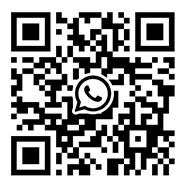16
2024
-
04
What are the measuring methods of bearings?
Author:
There are a variety of bearing measurement methods, the following are some commonly used methods:
1. Outer diameter measurement method: Use a micrometer or outer diameter gauge and other tools to measure the bearing outer diameter. This method is often used for bearings with large outside diameters and short lengths.
2. Inner diameter measurement method: Use tools such as twist finger or vernier caliper to measure the bearing inner diameter. This method is often used for bearings with large inner diameters. In addition, the measurement of the bore can also be carried out after checking the reference size on the outer diameter micrometer using the inner diameter meter, and the roundness and cylindricity of the bore need to be measured.
3. Wall thickness measurement method: The use of micrometer or outer diameter gauge and other tools to measure the wall thickness of the bearing, often used for thinner wall bearings.

4. Vibration spectrum analysis: By measuring the bearing vibration acceleration, speed and displacement values at different frequencies, analyze its spectrum characteristics, so as to judge the operating state of the bearing. This method requires the use of high-precision vibration sensors and spectrum analyzers with high accuracy but longer measurement time.
5. Impact pulse method: By measuring the impact pulse signal generated by the bearing in operation, analyze its pulse amplitude and pulse frequency characteristics, so as to judge the damage degree of the bearing. This method has the advantages of fast and simple, but the accuracy is slightly lower than that of vibration spectrum analysis.
6. Temperature measurement method: By measuring the temperature in the running of the bearing, analyze the temperature change trend, so as to judge the running state of the bearing. This method is simple and easy, but for bearings with high speed operation, the temperature change is small and the accuracy is low.
In addition, there are rotation testing, noise testing, friction testing, life testing and other methods to comprehensively evaluate the performance and condition of the bearing. The rotation test checks the rotating stability of the bearing, the noise test checks the sound of the bearing when it is running, the friction test evaluates the amount of friction when the bearing is rotating, and the life test evaluates the service time of the bearing under specified conditions.
In general, for the measurement of bearings, the appropriate method should be selected according to the specific needs and conditions, and a comprehensive evaluation should be carried out in combination with a variety of methods to obtain more accurate measurement results. In the measurement, we should also pay attention to the operation specification to avoid the occurrence of errors.
RELATED NEWS



